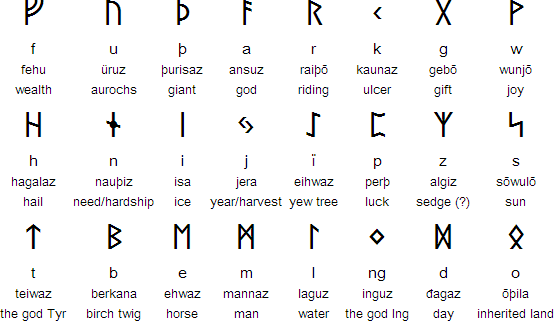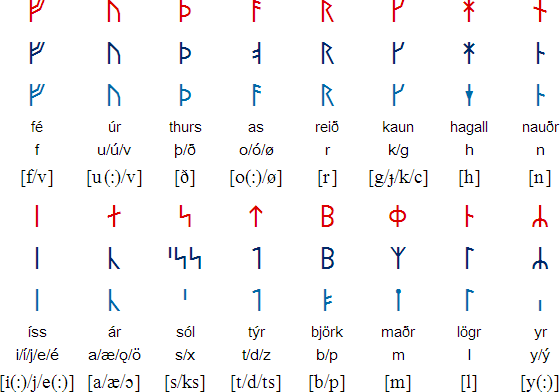The Rok Runestone
- Bruce Boyce
- Jun 19, 2021
- 5 min read
Updated: May 15, 2022

Aft Vāmōð stãnda rūnaʀ þāʀ. Æn Varinn fāði, faðiʀ, aft faigiãn sunu.
(After Vamoth stand these runes. And Varinn, the father, made them after the death-doomed son.)
First line of the Rok Runestone
At one time, a rune-covered stone had been built into a medieval church in the parish of Rok in the rich agricultural district of central Sweden. The stone was first documented in the 17th century but was not removed from the church walls until later in the 19th century. Rok means "monolith" in Old Norse, and it was once a free-standing stone of granite. It weighs five tons and stands nearly 8 feet tall.

All five of its visible sides are covered in runes of different styles and ciphers. There are 700 runes arranged in 28 lines. It is the longest runic inscription discovered, and dating to around 800 CE, it is one of the oldest runestones. Yet only one thing is clear about the stone. It was commissioned by a local chief and father, Varinn, in honor of his deceased son, Vamoth. Beyond this, scholars have been unable to agree upon an exact interpretation of the enigmatic writing.
Runes as a form of writing have a murky origin. Historians are uncertain as to when runes first developed. The Germanic people were perhaps the first to utilize runes and the earliest evidence goes back to the 2nd century CE. The Nordic cultures adopted the use of runes, and they were used up until the conversion to Christianity. For the Norse, it was Odin who gave the world runes and the knowledge to understand them. In this way, runes were both a pragmatic way of writing and imbued with magical and mystical powers. Rune Masters were specialists who understood the more arcane properties of divination and sorcery. Most inscriptions date from the 11th century, and that is when most known runestones were created. Runestones are free-standing rocks and boulders erected to commemorate a deceased person or an important event, and often situated near a place of significance.

The runic alphabet is known as futhark after the first six letters. The oldest version of the alphabet is Elder Futhark, and it is considered the closest to the original Germanic style of runes. Over time, Elder Futhark evolved into what is now called the Younger Futhark. At about the time of the Rok runestone, Younger Futhark became standardized and appears in three different forms: Danish, Norwegian, and Swedish. The Swedish is also referred to as the Short-Twig form of runes. The Rok runestone exhibits both the Elder and Younger Futhark style of writing. One of the difficulties of reading runes is that the same symbols could mean different things and there are no indications of word separations. Interpretation must rely on context. (Dots or crosses would appear in later inscriptions to mark separations.)
Elder Futhark, left, and Younger Futhark, right (Danish: red, Norwegian: blue, Swedish: green)
For more than a century, scholars have studied the Rok runestone to discern the meaning behind the runes. There is general agreement on the literal translation of the runes, but what the passages are actually trying to convey is still not completely settled. Most interpretations have focused on one section of the runes, which many have believed to refer to the Ostrogothic king, Theodoric, who ruled northern Italy and southern Germany during the 5th century CE. Based on this understanding of the text, experts felt the stone commemorated great battles and deeds. They also sought a connection to Theodoric and Varinn. Recent scholarship, though, has questioned this traditional view of the runestone. A group of Swedish researchers, led by Per Holmberg of the Unversity of Gothenburg, have advanced a new interpretation that takes the purpose of the stone in a different direction.
Prior researchers divided themselves along the lines that the stone served a narrative function or a ritual function. Holmberg and his team decided that they would view the stone as both. Knowing that the connection to Theodoric had never been adequately explained, the team abandoned this assumption. Instead, they re-translated the sequence of runes placing the word separation in a different spot. They believe this new way of looking at the runes fits better within the overall context of the inscription. One difficulty of reading the runestone was that there is no clue as to the order in which the lines of text should be read. The team of researchers broke with the more traditional sequential reading and offered an alternative that, again to them, made more sense in context. The research was a multidiscipline approach involving semiotics (symbology), linguistics, archeology, and the history of religion. The team wished to place the runestone within a socio-cultural context. The result is that they believe that the runestone contains a broader message about anxiety over a climate crisis.

The inscription is presented in the form of nine riddles. Five deal with the sun and center on a monthly war of the sun and moon over light. The other four riddles, argue the researchers, deal with the god Odin. Much of the imagery can be found throughout various sagas and Eddic poetry. An important motif of the inscription is the image of a wolf devouring the sun. In Norse mythology, the great wolf Fenrir eats the sun and signals the beginning of Ragnarok. Ragnarok is the final battle between the gods, led by Odin, and the giants. It represents the end of the world within Norse myth.

At the time the stone was created, this section of Sweden was a fertile agricultural area. Therefore, any climate changes would have been met with fear and trepidation. And some of these changes would not have been without precedent. The researchers point to several passages in the text that they believe point to actual disasters in the past. One key passage speaks of events nine generations ago. That would place these in around the time of Theodoric, in the 5th century, and have been documented. About this time, a series of volcanic eruptions caused the weather in Scandanavia to become cooler, thereby damaging crops and causing starvation. It is estimated that 50% of Sweden's population died between 536 - 560 CE. Added to this terrible memory, other noteworthy events happened around the time of the runestone's creation. There was an increase in solar storms. These storms would have caused the sky to turn red and make the winters extremely harsh and cold. Then there was a near-total eclipse. Varinn would have witnessed these, and understandably become frightened about the future. Varinn asserts that his son was "death-doomed." He died early so that he may join the other fallen warriors in Odin's army in defeating the giants at Ragnarok and thereby saving the sun.
The Rok runestone could be considered an important piece of Nordic literature. Runic inscriptions form key pieces of documentation of the Viking Age before the arrival of Christianity. There are many puzzles to unravel, but the Rok runestone offers an example of how different approaches and better knowledge help us re-interpret the past and better understand the people of a particular time and place. Both their triumphs and their intimate fears carved in granite.
Henrik Williams, Uppsala University, one of the researchers, demonstrates how they believe the Rok runestone should be read:
Further Reading
The Rok Runestone and the End of the World: Per Holmberg, et al.
The Emperor of Stones: Daniel Weiss (Archeology Magazine)
Viking Runes Through Time: Nicole Sanderson (PBS Nova)
Runic Alphabet: Omniglot


